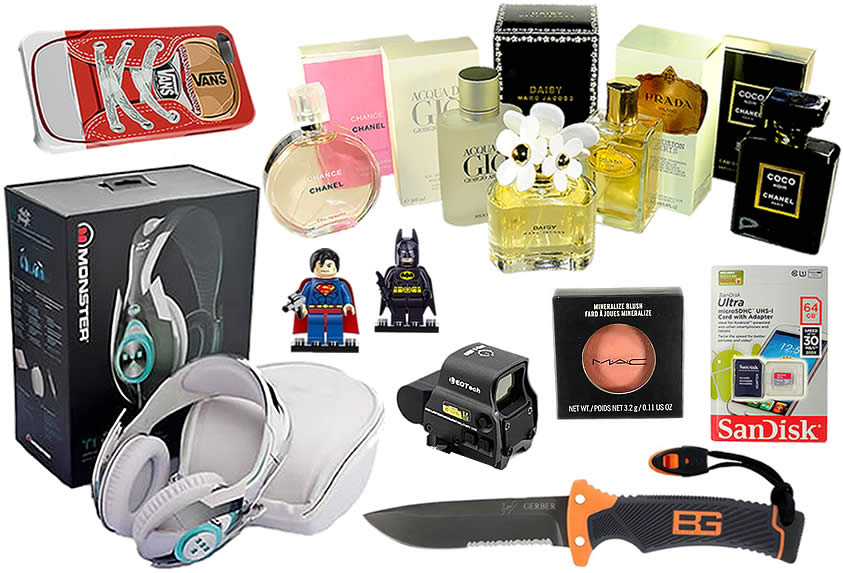One-Third Of Online Shoppers Received Counterfeit Goods This Year
E-commerce websites are perfect platforms to enable and facilitate counterfeit sales.
December 27, 2017 - One-third of online shoppers received an unexpected surprise this year - they unwillingly received a counterfeit product. Even more alarming, half of the recipients said they were tricked by counterfeits more than once, according to a survey published last month1.
Fraudulent sellers and counterfeit goods are a real consequence for online shoppers. Inexplicably, in response, 86% of consumers in the survey placed the blame on the brands - not the e-commerce sites - to do more to protect people from buying fakes, yet turned to the authentic brands when they realized they bought fakes.
E-commerce websites including Amazon (AMZN), eBay (EBAY), Walmart (WMT), and of course China's Alibaba (BABA), appropriately named after the fable “Ali Baba and the 40 Thieves,” are perfect platforms to enable and facilitate distribution of hundreds-of-millions of counterfeit goods. Counterfeiting is big business, currently a $1.7 trillion global criminal enterprise. The websites operate and profit under a huge legal loophole2, virtually immune to prosecution, IP laws and safety standards, leaving consumers, manufacturers and right holders the real victims. Counterfeit trafficking is hard to enforce, and foreign sellers are difficult to identify and escape liability.
While consumers should expect honest services, authentic and safe products when they shop online, it's simply not true. Forbes recently deemed e-commerce platforms, including eBay and Amazon, as "cesspools of counterfeits and other illegal and potentially dangerous goods2." Birkenstock, the global footwear icon, slammed Amazon as "an accomplice" of the fraudsters, while Apple found that 90% of Apple products it purchased directly from Amazon were fake.
The e-commerce giants all have illusory policies prohibiting the sale of counterfeit, fake or replica products, yet the items often remain and enforcement is completely arbitrary. Listings may remain for weeks until inventory is exhausted, or sellers simply relist counterfeit items. Buyers are not told they may have received a counterfeit item, even if it's dangerous or potentially deadly.
Policing counterfeit activity on e-commerce sites is almost impossible, a complaint common with manufacturers. The Counterfeit Report has removed over 22 million counterfeits from e-commerce websites - just a fraction of an inexhaustible supply of fakes destined for unsuspecting consumers.
Think you can spot a fake? All the items below were purchased online - they are all counterfeit.

(Photo: The Counterfeit Report®) Vans® does not make iPhone® 6&7 cell phone cases, counterfeit fragrances and cosmetics may contain lead, urine, antifreeze, beryllium, cadmium or other carcinogens. Monster® never made a 'Tron" headphone, and there is no such product as a SanDisk® 64GB microSDHC® memory card. Counterfeit Lego® toys may contain lead, shatter and do not meet U.S. safety standards. The EOtech® rifle sight lacks the correct optics components and the counterfeit Bear Grylls® knife cracked during the photo shoot.
Buyers should be very wary of purchasing any trademarked item online unless directly from the manufacturer or authorized retailer. Counterfeiters and dishonest sellers are very good at creating visually deceptive products, packaging, holograms, certification labels and documentation that easily deceive consumers.
Companies that facilitate criminal activity and profit from dishonest sales which impact consumer safety, jobs and public trust create a public perception of deception and impunity. However, their reputation damage is only a small part of the problem: the value of counterfeit and pirated goods is forecast to grow to $2.8 trillion, and cost 5.4 million net job losses3 by 2022, while manufacturer's brand integrity is tarnished or destroyed.
Footnote:
1 Vitreous World Survey prepared for MarkMonitor®
November 2017
2 Wade Shepard, "How Amazon's Wooing of Chinese Sellers is Hurting American Innovation,"
Forbes (Feb. 14, 2017), available at https://www.forbes.com/sites/wadeshepard/2017/02/14/how-amazons-wooing-of-chinese-sellers-is-hurting-american-innovation/#419e95ab1df2
3 THE ECONOMIC COSTS OF COUNTERFEITING AND PIRACY
The report was prepared for The International Chamber of Commerce, Business Action to Stop Counterfeiting and Piracy unit (ICC BASCAP) and The International Trademark Association (INTA)
January 2017 - Frontier Economics, Ltd.
 |